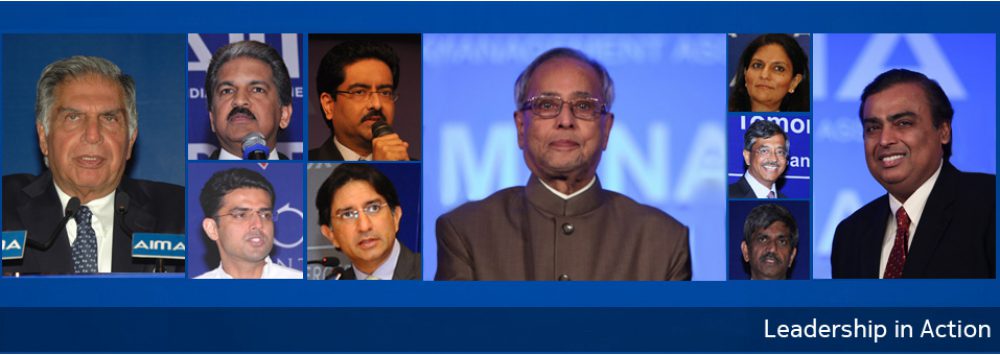Excerpt from an insightful speech by D Shivakumar, Chairman & CEO – India Region, PepsiCo India Holdings Pvt Ltd at AIMA’s 42nd National Management Convention held on 30th September – 1st October 2015 at Hotel Taj Palace, New Delhi. The theme for this session was “Disruptive Innovation: Winning By Changing The Rules”.
“Good afternoon ladies and gentlemen. It’s always a pleasure to come for an AIMA National Management Convention. My experience of disruptive innovation is from my own career, working in Hindustan lever when we tried to make accessible and affordable categories like shampoo, face cream, detergent, baby care products etc, for the bottom of the pyramid. Then in Nokia, we made technology which was completely new to the world and accessible in a country like India, we went from something like 80 million subscribers to 900 million subscribers. That was the fundamental shift and now on the new journey of health and wellness platform. So what is disruptive innovation? What examples have we seen over the last decade of disruptive innovation and what we’ll see in the future?

D Shivakumar, Chairman & CEO – PepsiCo India addressing AIMA’s 42nd NMC
Disruptive Innovation is about creating new value! You can create new value through new price point, new quality point, a time dimension, so fundamentally creating new value in any market is a disruptive innovation. You create new market itself. Mobile phones created a new market; tablets are creating a new market, a market which did not exist before. Suddenly you bring something which is a new to the market. Most of the disruptive innovation is led by technology that’s what we have seen and when new entrants come into the market, they do not have old cost. The old costs of legacy players are completely disrupted by these new people with new business models. We have seen this in steel and every other industry. New players tend to have cost structure which is significantly lower and hence their business models are different. Then in the technology world, we see the concept of freemium, everything goes free but they make money somewhere else. So what do you do? How do you compete with something which is free? That is the disruptive innovation.
Next is the use of ideal assets and I will give you an example of that. There are lots and lots of ideal assets across the world. Office space is an ideal asset, cars are ideal assets, planes are ideal assets, lots of ideal assets are lying across the place. Somebody puts together a new business model says how can I disrupt the traditional market by using ideal assets and finally the whole concept of user generated something which can disrupt the market. Let’s look at few examples of truly Disruptive Innovation.
First example is, the Encyclopedia versus Wikipedia. I talked of user generated content. Wikipedia is completely user generated content. In the old days if you did well in studies and your family was well to do they would order this hundred volume encyclopedia Britannica, which would come in a huge truck, and required a huge shelf to put it. And you know, everybody would come and talk about it for 5 minutes and its a 5 minute of conversation piece nobody read it. That’s what encyclopedia Britannica was in any house. It was an intellectual status. Encyclopedia now completely changed to Wikipedia. What is Wikipedia? You and I post, you believe you have knowledge on a topic, you will post it, somebody else has knowledge, they post. The volume of knowledge of Wikipedia is thousand times bigger than any Britannica can be. It is completely user generated, completely on the web; and doesn’t need any storage space. This is absolutely the disruption of the highest order. A product which is completely physical, completely user generated and digital. So encyclopedia Britannica, dead and gone and now we have Wikipedia in front of us.
Next, Floppy disk versus USBs. Every time you went to a presentation with a Floppy disk , you worried whether your floppy disk was corrupted, that was the most important question. You went through the security in the airport, something happened. You could never be 100 percent sure. Today that whole business is out of the window, all floppy disks are gone.Next one, the film print facade versus digital photography. In 2013, Kodak filed for bankruptcy. And this was the time when the photography was at its very peak. Today we take more picture in one day digitally then the whole world took between 1900 and 1999, believe it or not. It has given rise to whole new industries like Instagram, Whatsapp etc. Kodak died because they didn’t adapt to a disruption called digital and that’s why the physical photography is where it is today. So these are three examples andI believe we will see many more disruptions
I have picked 4 disruptions which are going to happen in next 5 to 10 years.
The first disruption is autonomous or driverless cars. People say as a joke that they should do very well in India you know why? Everybody in India likes back seat driving But think about the impact on the following industries:what happens to the insurance of cars? How they will change the way they calculate the risk on the step of a car. Next, your car is faulty, something is wrong with it, you take it to the mechanic what are you going to say, it’s a third hand felt problem, you know with the car, it is not your direct feel of the car. Today you have the direct feel whether the gear box is working, whether the headlights are working. Tomorrow you don’t have that so how will diagnostics happens and how will the whole concept of car repair happen, that is going to be disrupted. There will be completely new technologies coming there. Next, a very big disruption for all of us is etiquette, who sits on the front seat and who sits on the back seat when you don’t have a driver, how you are going to decide that, that is going to be a disruption in itself. These are the ways the technology disrupts our normal day to day life. So autonomous cars or Google car whatever you call it is one big disruption certainly.
Next one, even bigger one, is wearables. Now here is the trouble with the bands, the moment consumer has a band he knows his heart rate, his calories intake, kilometers he has run; steps he has taken etc. By knowing this he thinks he is a doctor – that is the trouble or that is the disruption. You suddenly start feeling like a doctor so when you go to a doctor you don’t tell him what you feel, you tell him your readings and hypothesis about it. And now suddenly the patient thinks like a doctor, it’s like going to college and thinking you are a professor. So disruption is going to be big with wearables and patient will have all kinds of information at their fingertips. These patients might get into self-medication. When you get into self-medication you follow the doctor’s routine, you take your own routine when it suits you. How will you design insurance for these self-medicated wearable doctors, how will you do that?You will have sensors in your water pipes and your light bulbsInternet of things will have fundamental implications on how you manage your house. It will be another big disruption. it’s already happening in many places.
I talked of user generated, ideal asset,and Uber Black is a great example. Today less than 2% of the cars are on the road, most of the cars are either parked in the garage, or in a parking lot. I talked of an ideal asset user generated something. What you were putting together a model where they can release all the cars on the road. If we have this model working brilliantly and I have no doubt that it will be very successful, what happens to new car sales? It will drop dramatically, what happens to energy consumption, what happens to a number of issues involved with the car, all of them will be the saving of the society and equally the current traditional industries will be disrupted a hell of a lot. Okay so suddenly putting ideal assets on the road will have a huge bearing for every person. Today a lot of people order a car and go from one place to another for 100 rupees. The owner has tremendous value, the car is on the road, and the kind of money that this sector is willing to give for cars and drivers on the road is amazing. Tomorrow you might find it difficult to get a driver if this takes off, nobody will come and work for you. The kind of money that this company would have given will be close to 50,000 to 100,000 rupees per month. So the driver business will be disrupted.
What are the implications of all these disruptions? The average life of a company has dropped dramatically. In the year 1960 the average life of a company was 60 years, in 2015 the average life of a S&P 500 company is just 12 years. So companies are not even getting into teenager ship, they are dying before 13. What happens to the life of CEOs? In the year 2000,the average tenure of a CEO was 10 years at the top. Today the average tenure of a CEO is just 5 years. Next questions, we need to ask when we talk about technology information etc. What happens to the concept of privacy and security in an Internet of Things, when all the information is available to everybody? All these will be challenges for the society as more and more things go more and more digital.
So I want to make 3 points, every business is in information business today. Peter Ruckard said many years ago that ‘we are in the knowledge worker era’, I think we have transcended that today. Every business wins on gleaning insights of information, number one. Number two, every business is going to be impacted by technology. There is not a single business which will not be impacted by technology. Any business you think of has to prepare for the disruption. If you don’t prepare for a technology disruption, your business will not see the 13th year. And finally, digital disruption will be the order of the day. I have shown examples of Wikipedia, autonomous cars, wearables,Internet of things and Uber car. Every single business will be digitally disrupted. So that’s all I have to say, ladies and gentleman, thank you very much for your time.”



